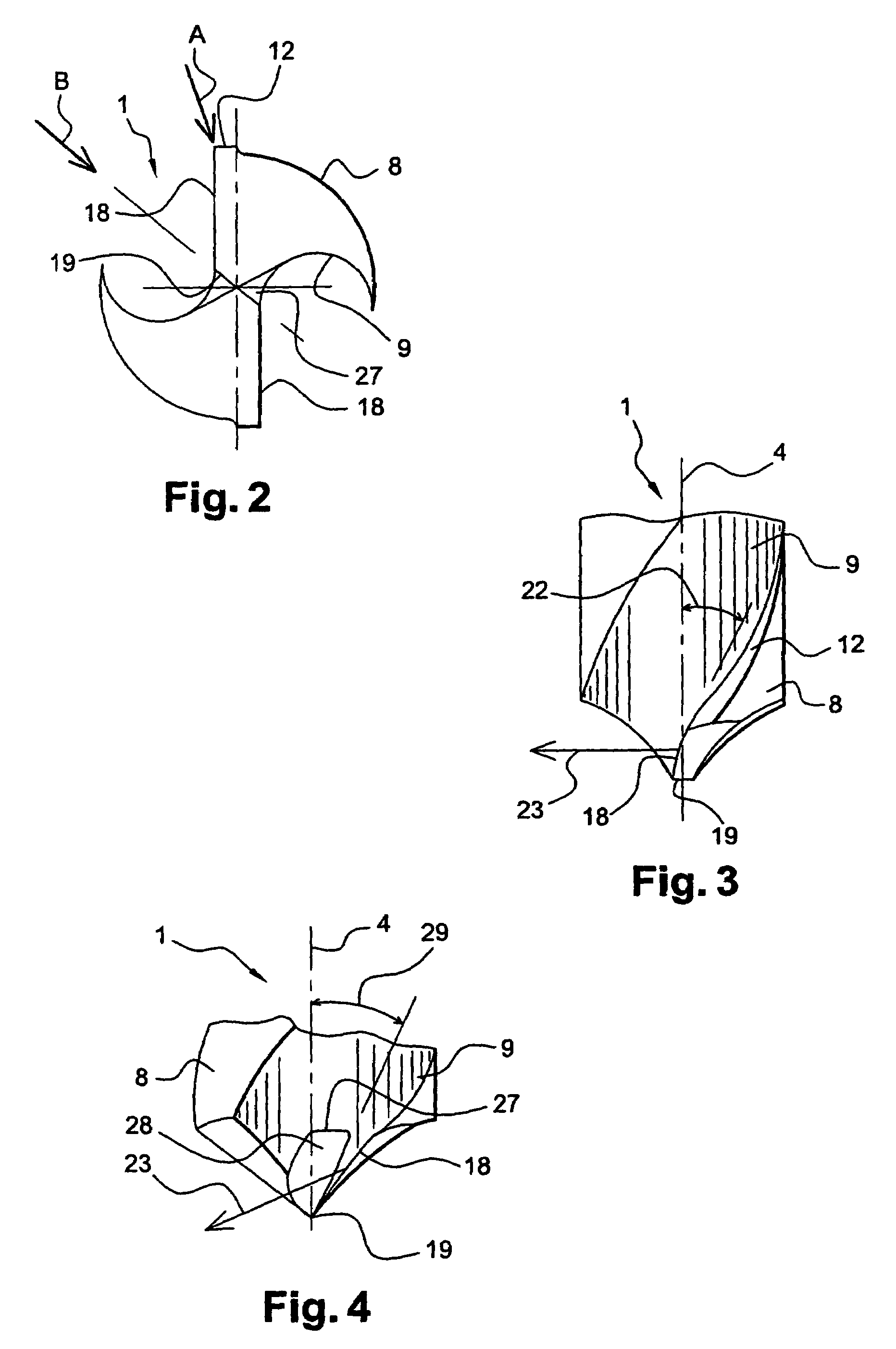Ceramic bit for high speed drilling
a ceramic bit and high-speed technology, applied in the direction of twist drills, manufacturing tools, wood boring tools, etc., can solve the problems of limited utilization of ceramic bits, difficult to provide ceramic bits for drilling at very high speeds in very hard materials, and greater stress that can be applied to drill bits during drilling operations, etc., to achieve high speed, improve the performance of ceramic bits, and simple and inexpensive
- Summary
- Abstract
- Description
- Claims
- Application Information
AI Technical Summary
Benefits of technology
Problems solved by technology
Method used
Image
Examples
Embodiment Construction
[0042]By way of example, FIGS. 1 to 4 show a one-piece ceramic drill bit for high speed drilling in materials of very great hardness, such as refractory aviation materials made of superalloys, and in particular of Inconel 718.
[0043]This ceramic bit 1 comprises (FIG. 1) a cylindrical shank 2 and a shaped portion 3 extending from the shank along the axis 4 of the bit. The shank includes an annular groove 5 for use in gripping the bit in the chuck of a machine tool (not shown). The free end 6 of the axial cylindrical shank is terminated by a chamfer 7 to facilitate inserting it into the chuck of the machine tool.
[0044]The shaped portion 3 of the bit 1 comprises two lips 8 and two flutes 9 extending in alternation around the axis 4 from the axial end 10 of the bit 1 that is remote from the shank 2, and referred to as the “tip” of the bit. The lips 8 and the flutes 9 wind helically around the axis 4 with a helix angle 11 that is less than or equal to 25°, approximately.
[0045]Each lip 8 c...
PUM
| Property | Measurement | Unit |
|---|---|---|
| relief angle | aaaaa | aaaaa |
| cutting angles | aaaaa | aaaaa |
| taper angle | aaaaa | aaaaa |
Abstract
Description
Claims
Application Information
 Login to View More
Login to View More - R&D
- Intellectual Property
- Life Sciences
- Materials
- Tech Scout
- Unparalleled Data Quality
- Higher Quality Content
- 60% Fewer Hallucinations
Browse by: Latest US Patents, China's latest patents, Technical Efficacy Thesaurus, Application Domain, Technology Topic, Popular Technical Reports.
© 2025 PatSnap. All rights reserved.Legal|Privacy policy|Modern Slavery Act Transparency Statement|Sitemap|About US| Contact US: help@patsnap.com



